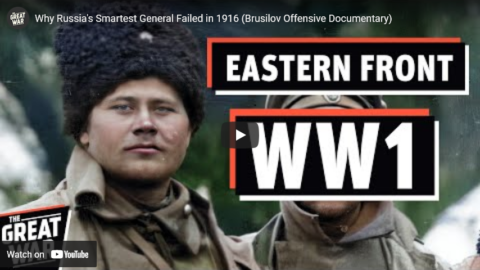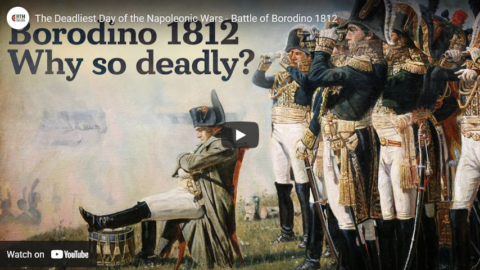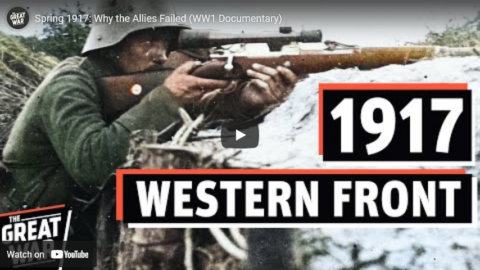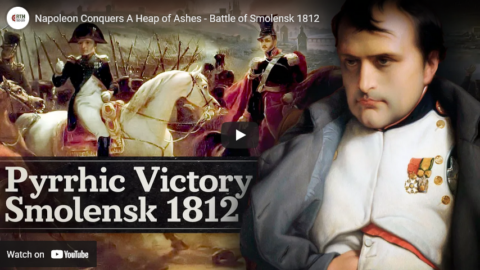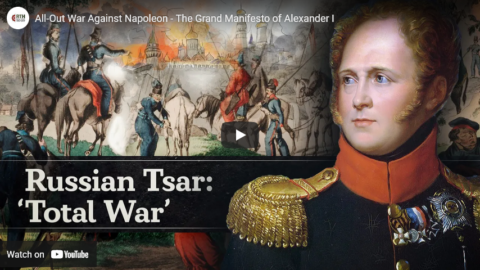That isn’t to say that battlefield tactics hadn’t improved. Quite to the contrary, 1918 saw both the Germans and the Allies deploy far more effective systems for assaulting trenches, though I would argue that it was actually the French who came closest to having the matter as figured out as one could have it with the equipment of 1918. The French method, termed la bataille conduite (“methodical battle”) has an understandably poor reputation because this method failed so badly against the technologies of 1940 but as we’ve seen that was quite a different technological environment than 1918.
On the defensive, the French had adopted many of the same principles of the German defense-in-depth we’ve already discussed. On the offense, they came to favor (particularly under the influence of Philippe Pétain and […] Ferdinand Foch) an offensive doctrine designed to maximize France’s position in an attritional contest: that is to limit losses and maximize enemy casualties while still taking and holding ground. The system favored limited “bite-and-hold” attacks, ideally limited such that the attack stopped before triggering the inevitable German counter-attack. Remember that it was when the attacker ran out of steam and the defender’s counter-attack came that the casualty ratios tended to shift to favor the defender. In French thinking, the solution was just to not reach that point.
Instead, the French came to favor – and the British and Americans picked up the same method by the end – elaborately prepared small offensives. The elaborate preparation meant planning out the attack carefully, using shorter but carefully planned hurricane barrages (all of this planning, of course took time) and then seizing the enemy’s forward positions and just their forward positions. Instead of then trying to push through – the old French notion of assault brutal et continu (“brutal and continuous” – a “keep up the pressure till they break” method) which Robert Nivelle had favored – methodical battle focused on “bite-and-hold”.
Once you hit your limited objectives in that first rush where enemy resistence is disoriented (from the short, hurricane barrage) and weaker – and thus where the casualty ratio favors you – you stop and begin fortifying your position. You dig those communications trenches, move up your artillery and brace for the counter-attack. By the time the enemy realizes you aren’t going to attack his second or third line positions (and trigger his devastating counter-attack), you are dug in and prepared for his attack (the hold part of “bite-and-hold”). To reestablish defense in depth, the defender now has to back up to establish new lines to the rear (or launch his own fresh offensive, but by late 1918, the Germans were too weak for this). A long series of such attacks – with significant intervals for fresh careful planning and stockpiling resources – could slowly but surely lever your opponent off of key positions, one by one. It would also preserve a favorable balance of casualties, ensuring that in the end, the enemy runs out of men and shells before you do (that is the “rupture” that Joffre had always hoped for, but which arrived but two years too late for his career).
Such a slow, expensive, bloody and unglamorous strategy was in some ways only politically possible once, by 1918, it had become apparent that all other options were exhausted. That said, to argue that this bite-and-hold operational doctrine broke the trench stalemate is probably not fair either. The progress of allied offensives in 1918 was extremely slow by even the standards of 1914. The German Spring Offensive was well and truly done in July and the Allied offensive picked up in August and ran through November as fast as it could (with Foch doing everything short of getting out and pushing the offensive to try to speed it up) and yet the final allied positions by November were not even in Germany. Even at its greatest distance in 100 days of unbroken victories by a force with materiel and numerical superiority, the front moved less than 100 miles and the overall casualty ratio was roughly even (around a million on both sides).
Bret Devereaux, “Collections: No Man’s Land, Part II: Breaking the Stalemate”, A Collection of Unmitigated Pedantry, 2021-09-24.
July 4, 2022
QotD: The French solution to trench warfare
June 25, 2022
Why Russia’s Smartest General Failed in 1916 (the Brusilov Offensive)
The Great War
Published 24 Jun 2022Sign up for Curiosity Stream and get Nebula bundled in and SAVE 26%:
https://curiositystream.com/thegreatwarThe start of the Brusilov Offensive was the most successful Russian military operation during the First World War. It crippled the Austro-Hungarian Army and forced the Germans to divert troops from Verdun. But the Brusilov Offensive ultimately was a failure and cost the Russians an enormous number of men. What went wrong?
» SUPPORT THE CHANNEL
Patreon: https://www.patreon.com/realtimehistory» THANKS TO OUR CO-PRODUCERS
John Ozment, James Darcangelo, Jacob Carter Landt, Thomas Brendan, Kurt Gillies, Scott Deederly, John Belland, Adam Smith, Taylor Allen, Rustem Sharipov, Christoph Wolf, Simen Røste, Marcus Bondura, Ramon Rijkhoek, Theodore Patrick Shannon, Philip Schoffman, Avi Woolf, Emile Bouffard, William Kincade, Daniel L Garza, Stefan Weiß, Matt Barnes, Chris Daley, Marco Kuhnert, Simdoom» SOURCES
Buttar, Prit, Russia’s Last Gasp: The Eastern Front 1916-1917, (Oxford: Osprey Publishing, 2016)Dowling, Timothy C., The Brusilov Offensive, (Indianapolis: Indiana University Press, 2008)
Golovin, Nicholas, “Brusilov’s Offensive: The Galician Battle of 1916”, The Slavonic and East European Review, Volume 13, Number 39, (1935)
Schindler, John, “Steamrollered in Galicia: The Austro-Hungarian Army and the Brusilov Offensive, 1916”, War in History, Volume 10, Number 1, (2003)
Stone, David R., The Russian Army in the Great War: The Eastern Front, 1914-1917, (Lawrence, KS: University Press of Kansas, 2015)
Tunstall, Graydon A., “Austria-Hungary and the Brusilov Offensive of 1916”, The Historian, Volume 70, Issue 1, (2008)
Uzefovich, Alexis M., “Russia in the World War, 1914-1918”, The Military Engineer, Volume 33, Number 190, (1941)
» OUR SISTER CHANNEL
https://youtube.com/realtimehistory»CREDITS
Presented by: Jesse Alexander
Written by: Jesse Alexander
Director: Toni Steller & Florian Wittig
Director of Photography: Toni Steller
Sound: Toni Steller
Editing: Toni Steller
Motion Design: Toni Steller
Mixing, Mastering & Sound Design: http://above-zero.com
Research by: Jesse Alexander
Fact checking: Florian WittigChannel Design: Yves Thimian
Contains licensed material by getty images
Maps: MapTiler/OpenStreetMap Contributors & GEOlayers3
All rights reserved – Real Time History GmbH 2022
June 19, 2022
Kursk: Soviets Dig-In for Blitzkrieg – WW2 – 199 – June 18, 1943
World War Two
Published 18 Jun 2022The Soviets have put civilians to work by the hundreds of thousands, building line after line of defenses in the Kursk salient, where they are sure the Germans are soon to attack. Meanwhile the Allies are making moves in preparations for two big upcoming offensives of their own — in Sicily and the Central Solomon Islands.
(more…)
May 28, 2022
QotD: Breaking the trench stalemate with tactical air power
The first function aircraft were put to in WWI was reconnaissance. In 1914, that might mean locating the enemy in a fast-moving battlefield, but as soon as the trench stalemate set in, reconnaissance mostly meant identifying enemy buildups along the line and – still more importantly – serving as spotters for artillery. It wasn’t a huge cognitive leap to go from having aircraft which identified targets for the artillery to thinking that the aircraft could be the artillery. But as with tanks, the technical limitations of the platforms in use meant that actually meaningful close air support was still two decades away when the war ended. The rapid development of aircraft in these early days means that there is a truly bewildering array of aircraft designs in use during the war, but the Farman F.50 is a good sample for what the most advanced bombers in common use looked like towards the war’s end. It carried a maximum of eight 44kg (totalling 352kg) bombs under the wings, which were dropped unguided. With a maximum speed of less than 100mph and a service ceiling under 5000m, it was also an extremely vulnerable platform: fragile, slow and with a relatively low flight ceiling. The French mainly used bombers at night for this reason.
But how much airpower does it take to really move a division out of position? In 1944, at the start of Operation Cobra as part of the Normandy breakout, it was necessary for US forces to move the powerful armored division Panzer Lehr out of its prepared positions outside of St. Lo. Over the course of an hour and a half, the U.S. Eighth Air Force hit Panzer Lehr with approximately three thousand aircraft, including 1,800 heavy bombers (each of which might have had bomb-loads of c. 2-3,500kg; the attack would have been the equivalent of about 13,000 Farman F.50s (of which only a hundred or so were built!)). By this point, even medium bombers carried bomb loads in the thousands of pounds, like the B-25 Mitchell medium bomber, with a bomb load of 3000lbs (1360kg). This was followed by a hurricane artillery barrage! Despite this almost absurdly awesome amount of firepower (which, to be clear, inflicted tremendous damage; by the end of Operation Cobra, Panzer Lehr – the heaviest and most powerful Panzer division in the west – had effectively ceased to exist), Panzer Lehr, badly weakened was still very capable of resisting and had to be pushed out of position by ground attack over the next three days.
Needless to say, nothing on offer in 1918 or for a decade or more after, was prepared to offer that kind of offensive potential from the air. That kind of assault would have required many thousands of aircraft with capabilities far exceeding what even the best late-war WWI bombers could do. Once again, while close air support doctrine was developed with one eye on the trench stalemate and the role airpower could play in facilitating a breakthrough and restoring maneuver (either by blasting the breakthrough or – as in Soviet Deep Battle doctrine – engaging enemy rear echelon units to bog down reinforcements). But the technology wasn’t anywhere near the decisive point by 1918. Instead, the most important thing aircraft could do was spot for the artillery, which is mostly what aircraft continued to do, even in late 1918.
Bret Devereaux, “Collections: No Man’s Land, Part II: Breaking the Stalemate”, A Collection of Unmitigated Pedantry, 2021-09-24.
May 27, 2022
The Crusades: Part 8 – The Rise of Venice
seangabb
Published 12 Mar 2021The Crusades are the defining event of the Middle Ages. They brought the very different civilisations of Western Europe, Byzantium and Islam into an extended period of both conflict and peaceful co-existence. Between January and March 2021, Sean Gabb explored this long encounter with his students. Here is one of his lectures. All student contributions have been removed.
(more…)
May 6, 2022
The Deadliest Day of the Napoleonic Wars – Battle of Borodino 1812
Real Time History
Published 5 May 2022Sign up for the CuriosityStream + Nebula Bundle: https://curiositystream.com/realtimeh…
The Battle of Borodino was the deadliest single day in history until the outbreak of the First World War. It was the culmination of Napoleon’s advance on Moscow. Due to the terrain and the Russian positions, it was a gigantic battle of attrition — which Napoleon won at a high cost.
» SUPPORT US ON PATREON
https://patreon.com/realtimehistory» THANK YOU TO OUR CO-PRODUCERS
John Ozment, James Darcangelo, Jacob Carter Landt, Thomas Brendan, Kurt Gillies, Scott Deederly, John Belland, Adam Smith, Taylor Allen, Rustem Sharipov, Christoph Wolf, Simen Røste, Marcus Bondura, Ramon Rijkhoek, Theodore Patrick Shannon, Philip Schoffman, Avi Woolf,» SOURCES
Boudon, Jacques-Olivier. Napoléon et la campagne de Russie en 1812. 2021.
Fileaux, Christian. “La bataille de la Moskova – 7 septembre 1812. Récit,” in Rey, Marie-Pierre and Thierry Lentz, eds. 1812, la campagne de Russie. 2012.
Lieven, Dominic. Russia Against Napoleon. 2010.
Mikaberidze, Alexander. The Battle of Borodino: Napoleon against Kutuzov. 2007.
Rey, Marie-Pierre. L’effroyable tragédie: une nouvelle histoire de la campagne de Russie. 2012.
Zamoyski, Adam. 1812: Napoleon’s Fatal March on Moscow. 2005.» OUR STORE
Website: https://realtimehistory.net»CREDITS
Presented by: Jesse Alexander
Written by: Jesse Alexander
Director: Toni Steller & Florian Wittig
Director of Photography: Toni Steller
Sound: Above Zero
Editing: Toni Steller
Motion Design: Toni Steller
Mixing, Mastering & Sound Design: http://above-zero.com
Digital Maps: Canadian Research and Mapping Association (CRMA)
Research by: Jesse Alexander
Fact checking: Florian WittigChannel Design: Simon Buckmaster
Contains licensed material by getty images
Maps: MapTiler/OpenStreetMap Contributors & GEOlayers3
All rights reserved – Real Time History GmbH 2022
May 5, 2022
The Forgotten Battle: The story of the Battle for the Scheldt
Omroep Zeeland
Published 18 Mar 2020Documentary directed by Margot Schotel Omroep Zeeland (2019) about the battle of the Scheldt. An large and important battle in the autumn of 1944, which was crucial for the liberation of the Netherlands and Europe
After D-Day (6 June, 1944), the Allied Forces quickly conquered the north of France and Belgium. Already on 4 September they took Antwerp, a strategically vital harbor. However, the river Scheldt, the harbor’s supply route, was still in German hands. Montgomery was ordered by Eisenhower to secure both sides of the Scheldt, the larger part of which is located in the Netherlands, but Montogomery decided otherwise and started Operation Market Garden. He left the conquest of the Scheldt to the Canadians and the Polish Armies who then had to fight a much stronger enemy that was ordered by Hitler himself to keep its position at all costs. Even though Market Garden eventually failed, it received an almost mythological status in the narrative about the World War II, while the successful battle for the Scheldt was never really acknowledged by history.
With the cooperation of Tobias van Gent, Ingrid Baraitre, Carla Rus, Johan van Doorn ea.
Blijf op de hoogte van het laatste Zeeuwse nieuws:
Volg ons via:
Instagram: https://www.instagram.com/omroepzeeland/
Twitter: https://twitter.com/omroepzeeland
Youtube: https://www.youtube.com/c/omroepzeeland
May 2, 2022
“Race To The Sea” – The Failure of the Schlieffen Plan– Sabaton History 110 [Official]
Sabaton History
Published 1 May 2022In the fall of 1914, the initial mobile stage of the war on the Western Front came to an end outside of Paris and trench warfare set in. As the trench lines stretched from the Swiss border to northern France and Belgium, both sides realized that if they could head north quickly enough, they could turn the enemy’s flank and win the war NOW.
Support Sabaton History on Patreon: https://www.patreon.com/sabatonhistory
Listen to “Race To The Sea” on the album The War To End All Wars: https://music.sabaton.net/TheWarToEnd…
Watch the Official Music Video of “Race To The Sea” here: https://www.youtube.com/watch?v=m-yrj…
Listen to Sabaton on Spotify: http://smarturl.it/SabatonSpotify
Official Sabaton Merchandise Shop: http://bit.ly/SabatonOfficialShopHosted by: Indy Neidell
Written by: Markus Linke and Indy Neidell
Directed by: Rickard Eri
April 29, 2022
Setting the Stage for Borodino – The Battle of Shevardino Redoubt
Real Time History
Published 28 Apr 2022Support us on Patreon: https://patreon.com/realtimehistory
Napoleon’s advancing army had finally spotted the entire Russian Army before them, the stage was set for the deciding clash of the Russian campaign at the small village of Borodino. Before the armies could duke it out, Napoleon wanted to eliminate a forward defensive position on the Russian left flank: The Shevardino Redoubt.
» THANK YOU TO OUR CO-PRODUCERS
John Ozment, James Darcangelo, Jacob Carter Landt, Thomas Brendan, Kurt Gillies, Scott Deederly, John Belland, Adam Smith, Taylor Allen, Rustem Sharipov, Christoph Wolf, Simen Røste, Marcus Bondura, Ramon Rijkhoek, Theodore Patrick Shannon, Philip Schoffman, Avi Woolf,» SOURCES
Boudon, Jacques-Olivier. Napoléon et la campagne de Russie en 1812. 2021.
Lieven, Dominic. Russia Against Napoleon. 2010.
Mikaberidze, Alexander. The Battle of Borodino: Napoleon against Kutuzov. 2007.
Rey, Marie-Pierre. L’effroyable tragédie: une nouvelle histoire de la campagne de Russie. 2012.
Zamoyski, Adam. 1812: Napoleon’s Fatal March on Moscow. 2005.» OUR STORE
Website: https://realtimehistory.net»CREDITS
Presented by: Jesse Alexander
Written by: Jesse Alexander
Director: Toni Steller & Florian Wittig
Director of Photography: Toni Steller
Sound: Above Zero
Editing: Toni Steller
Motion Design: Toni Steller
Mixing, Mastering & Sound Design: http://above-zero.com
Digital Maps: Canadian Research and Mapping Association (CRMA)
Research by: Jesse Alexander
Fact checking: Florian WittigChannel Design: Simon Buckmaster
Contains licensed material by getty images
Maps: MapTiler/OpenStreetMap Contributors & GEOlayers3
All rights reserved – Real Time History GmbH 2022
April 23, 2022
Spring 1917: Why the Allies Failed (WW1 Documentary)
The Great War
Published 22 Apr 2022Sign up for Curiosity Stream and get Nebula bundled in and SAVE 26%: https://curiositystream.com/thegreatwar
The Allied 1917 Spring Offensive masterminded by French general Robert Nivelle was supposed to end the stalemate on the Western Front and bring a decisive breakthrough. But the German Army also knew they couldn’t win the war on the offensive and thus prepared a new type of defensive system: The Hindenburg Line.
» SUPPORT THE CHANNEL
Patreon: https://www.patreon.com/thegreatwar» THANKS TO OUR CO-PRODUCERS
John Ozment, James Darcangelo, Jacob Carter Landt, Thomas Brendan, Kurt Gillies, Scott Deederly, John Belland, Adam Smith, Taylor Allen, Rustem Sharipov, Christoph Wolf, Simen Røste, Marcus Bondura, Ramon Rijkhoek, Theodore Patrick Shannon, Philip Schoffman, Avi Woolf,» SOURCES
Cook, Tim, “Storm Troops: Combat Effectiveness and the Canadian Corps in 1917” in Dennis, Jeffrey & Grey, Peter (eds), 1917: Tactics, Training and Technology: the 2007 Chief of Army’s Military History Conference, (Canberra: Australian History Military Publications, 2007)Coombes, David, Bloody Bullecourt, (Barnsley: Pen & Sword Military, 2016)
Doughty, Robert T, Pyrrhic Victory: French Strategy and Operations in the Great War, (Cambridge, MA: Harvard University Press, 2005)
Doughty, Robert A, “How did France Weather the Troubles of 1917?” in Dennis, Jeffrey & Grey, Peter (eds), 1917: Tactics, Training and Technology: the 2007 Chief of Army’s Military History Conference, (Canberra: Australian History Military Publications, 2007)
Farr, Don, A Battle Too Far: Arras 1917, (Warwick: Helion & Company, 2018)
Foley, Robert T, “The Other Side of the Wire: The German Army in 1917” in Dennis, Jeffrey & Grey, Peter (eds), 1917: Tactics, Training and Technology: the 2007 Chief of Army’s Military History Conference, (Canberra: Australian History Military Publications, 2007)
Lupfer, Timothy T, “The Dynamics of Doctrine: The Changes in German Tactical Doctrine During the First World War” Leavenworth Papers, No. 4, Combat Studies Institute, U.S. Army Command and General Staff College, (Fort Leavenworth, KS: 1981)
Nicholls, Jonathan, Cheerful Sacrifice: The Battle of Arras 1917, (London: Leo Cooper, 1990)
» OUR SISTER CHANNEL
https://youtube.com/realtimehistory» CREDITS
Presented by: Jesse Alexander
Written by: Jesse Alexander
Director: Toni Steller & Florian Wittig
Director of Photography: Toni Steller
Sound: Toni Steller
Editing: Jose Gamez
Motion Design: Philipp Appelt
Mixing, Mastering & Sound Design: http://above-zero.com
Research by: Jesse Alexander
Fact checking: Florian WittigChannel Design: Yves Thimian
Contains licensed material by getty images
Maps: MapTiler/OpenStreetMap Contributors & GEOlayers3
All rights reserved – Real Time History GmbH 2022
April 8, 2022
Napoleon Conquers A Heap of Ashes – Battle of Smolensk 1812
Real Time History
Published 7 Apr 2022Sign up at https://curiositystream.com/realtimeh… and get Nebula bundled in.
Smolensk is an important symbolic city to the Russians in 1812, for Napoleon it’s a strategic objective he wants to conquer to improve is deteriorating supply situation. The Battle of Smolensk leads to an inferno in the city, it gets virtually destroyed and nearly all residents flee.
» SUPPORT US ON PATREON
https://patreon.com/realtimehistory» THANK YOU TO OUR CO-PRODUCERS
John Ozment, James Darcangelo, Jacob Carter Landt, Thomas Brendan, Kurt Gillies, Scott Deederly, John Belland, Adam Smith, Taylor Allen, Rustem Sharipov, Christoph Wolf, Simen Røste, Marcus Bondura, Ramon Rijkhoek, Theodore Patrick Shannon, Philip Schoffman, Avi Woolf,» SOURCES
Der Feldzug der Österreicher gegen Rußland im Jahre 1812. Aus offiziellen Quellen von Ludwig Freiherrn von Welden, Wien 1870.
Vojtêch Kessler: Der österreichische Pyrrhos – Der Feldzug des österreichischen Auxiliar-Korps im Jahre 1812 in den Briefen des Oberbefehlshabers Karl Fürst von Schwarzenberg an seine Frau.
Boudon, Jacques-Olivier. Napoléon et la campagne de Russie en 1812. 2021.
Holzhausen, Paul. Die Deutschen in Russland 1812. Leben und Leiden auf der Moskauer Heerfahrt. Berlin 1912.
Lieven, Dominic. Russia Against Napoleon. 2010.
Rey, Marie-Pierre. L’effroyable tragédie: une nouvelle histoire de la campagne de Russie. 2012.
Zamoyski, Adam. 1812: Napoleon’s Fatal March on Moscow. 2005.» OUR STORE
Website: https://realtimehistory.net»CREDITS
Presented by: Jesse Alexander
Written by: Jesse Alexander
Director: Toni Steller & Florian Wittig
Director of Photography: Toni Steller
Sound: Above Zero
Editing: Toni Steller
Motion Design: Toni Steller
Mixing, Mastering & Sound Design: http://above-zero.com
Digital Maps: Canadian Research and Mapping Association (CRMA)
Research by: Jesse Alexander
Fact checking: Florian WittigChannel Design: Simon Buckmaster
Contains licensed material by getty images
Maps: MapTiler/OpenStreetMap Contributors & GEOlayers3
All rights reserved – Real Time History GmbH 2022
April 6, 2022
How To Build a Nazi Fortress – WW2 Special
World War Two
Published 5 Apr 2022Few things of the Second World War are more intimidating than the iconic German bunker. Made out of reinforced concrete with a thickness of up to 3.5 meters, these casemates and pillboxes were incredibly tough to destroy. Built to withstand shells and bombs, they provided shelter to troops and civilians alike. But there were also some even larger super-structures. From giant U-Boat shelters and fearsome Flak-Towers, to the ultimate Führerbunker, the Germans perfected the art of bunker building.
(more…)
March 25, 2022
All-Out War Against Napoleon – The Grand Manifesto of Alexander I
Real Time History
Published 24 Mar 2022Get Nebula and CuriosityStream in a great bundle deal: https://curiositystream.com/realtimeh…
In the beginning of Napoleon’s invasion of Russia, the Russian Tsar Alexander I was under pressure to rally his people. A month into the campaign he declared the The Patriotic War (Отечественная война) to fight back Napoleon — who was already having serious supply issues and a deteriorating logistics network.
» SUPPORT US ON PATREON
https://patreon.com/realtimehistory» THANK YOU TO OUR CO-PRODUCERS
John Ozment, James Darcangelo, Jacob Carter Landt, Thomas Brendan, Kurt Gillies, Scott Deederly, John Belland, Adam Smith, Taylor Allen, Rustem Sharipov, Christoph Wolf, Simen Røste, Marcus Bondura, Ramon Rijkhoek, Theodore Patrick Shannon, Philip Schoffman, Avi Woolf,» SOURCES
Boudon, Jacques-Olivier. Napoléon et la campagne de Russie en 1812. 2021.
Chandler, David. The Campaigns of Napoleon, Volume 1. New York 1966.
Clausewitz, Carl von. Hinterlassene Werke des Generals Carl von Clausewitz über Krieg und Kriegsführung. Siebenter Band, Der Feldzug von 1812 in Rußland, der Feldzug von 1813 bis zum Waffenstillstand und der Feldzug von 1814 in Frankreich. Berlin 1835.
Geschichte der Kriege in Europa seit dem Jahre 1792 als Folgen der Staatsveränderung in Frankreich unter König Ludwig XVI., neunter Teil, 1. Band. Berlin 1839.
Hartwich, Julius von. 1812. Der Feldzug in Kurland. Nach den Tagebüchern und Briefen des Leutnants Julius v. Hartwich. Berlin 1910.
Holzhausen, Paul. Die Deutschen in Russland 1812. Leben und Leiden auf der Moskauer Heerfahrt. Berlin 1912.
Lieven, Dominic. Russia Against Napoleon. 2010.
Mikaberidze, Alexander. “The Lion of the Russian Army”: Life and Military Career of General Prince Peter Bagration 1765-1812. PhD Dissertation, 2003.
Rey, Marie-Pierre. L’effroyable tragédie: une nouvelle histoire de la campagne de Russie. 2012.
Robson, Martin. A History of the Royal Navy: the Napoleonic Wars. 2014.
Tagebuch des Königlich Preußischen Armeekorps unter Befehl des General-Leutnants von Yorck im Feldzug von 1812. Berlin 1823.
Zamoyski, Adam. 1812: Napoleon’s Fatal March on Moscow. 2005.
Безотосный В. М. Россия в наполеоновских войнах 1805–1815 гг. (Москва: Политическая энциклопедия, 2014)
Отечественная война 1812 года. Энциклопедия (Москва: РОССПЭН, 2004)» OUR STORE
Website: https://realtimehistory.net»CREDITS
Presented by: Jesse Alexander
Written by: Jesse Alexander
Director: Toni Steller & Florian Wittig
Director of Photography: Toni Steller
Sound: Above Zero
Editing: Toni Steller
Motion Design: Toni Steller
Mixing, Mastering & Sound Design: http://above-zero.com
Digital Maps: Canadian Research and Mapping Association (CRMA)
Research by: Sofia Shiogorova, Jesse Alexander
Fact checking: Florian WittigChannel Design: Simon Buckmaster
Contains licensed material by getty images
Maps: MapTiler/OpenStreetMap Contributors & GEOlayers3
All rights reserved – Real Time History GmbH 2022
March 13, 2022
QotD: The Kaiser’s army and their Auftragstaktik innovations
Auftragstaktik is German for “mission-type tactics” or “mission-oriented tactics”, and it’s the main non-genetic reason they were so fearsome in battle back in the 20th century. Basically the idea is to delegate command authority to the lowest possible level, because the guys who are actually in the shit have a much better sense of the tactical realities than the guys back at headquarters. So long as the guys at the front are adequately briefed about command’s strategic objectives, they can, and should, make the tactical decisions in their areas of responsibility.
They started developing it before WWI, but proof of concept was in the trenches, and it succeeded spectacularly. It’s hard to exaggerate just how outmanned and outgunned the Germans were in that conflict, and I don’t have the exact numbers to hand, but one especially fearsome measure was “artillery density”. On the German side, the preparatory barrage before an attack averaged, at best, something like 1 shell per square foot (this is from memory, so doubtless incorrect, but you get the idea). The Allies achieved something like one shell per square inch, and there you have it …
… or there you should’ve had it, if the Allies had anything close to German-level command-and-control. But they didn’t. British WW1 memoirs, especially, are full of the kinds of ludicrous fuckups that Joseph Heller wouldn’t dare put in his novels. Robert Graves (yeah, I know, not the world’s most trustworthy source) had an especially funny scene where his company got this elaborate set of orders to move to such-and-such coordinates, build an elaborate strongpoint (laid out in minute detail), then move on to some other coordinates and do something else, again spelled out to the nth degree.
Those coordinates were, of course, a mile and a half behind enemy lines.
Or consider that silly movie 1917. If you haven’t seen it, don’t. If you have, and you know a little bit about WWI, you’ll remember how ludicrous the premise was. You don’t need to send a squad, Saving Private Ryan-style, to get a message to a distant dugout where they’re waiting to jump off for an attack. For one thing, there’s this little gadget called a “radio”, and by 1917 they were portable enough to get there. But even if not, there’s this other gadget called a “telephone”, and any C-and-C bunker anywhere along the line would have one, no matter how fast the advance was moving. Finally, even if they didn’t have either of those, the supporting artillery park sure as hell would’ve — just ring them up and call off the preparatory barrage, and I promise you, none of those troops would’ve moved an inch, even if it meant shooting Colonel Sherlock Holmes right in his prissy, pencil-mustached mug.
If you know a bit more about WWI, that kind of ludicrous, plot-ruining stupidity seems like the most accurate thing in the movie, because that kind of bullshit happened all the time. Telephone wires were always getting cut by shellfire, for instance, and since none of the red tabs [staff officers] back at the base would dream of seeing the situation for themselves, field soldiers were always getting scads of contradictory orders, sent at bewildering times. More than one advance was held up by frontline troops having to send runners back to check the orders of other runners, which had been countermanded by yet other runners, coming up with telephone messages …
The guys in the opposing trenches, meanwhile, were just getting on with it. Graves again (and again, I know), quoting from memory, wondered what the High Command would’ve done had they known that for the better part of a year, the entire sector opposite the Royal Welch Fusiliers had been held by no one higher than a corporal.
Severian, “Auftragstaktik: Logic and Anti-Logic”, Founding Questions, 2021-11-18.
March 11, 2022
A Life Between Shells and Shelter – On the Homefront 015
World War Two
Published 10 Mar 2022Right from the start of World War Two, there has been little distinction between combatant and civilian. While bombs keep falling, people in Great Britain and in Germany are sitting in bunkers, basements and underground tunnels. We are taking a look at life inside those shelters.
(more…)

